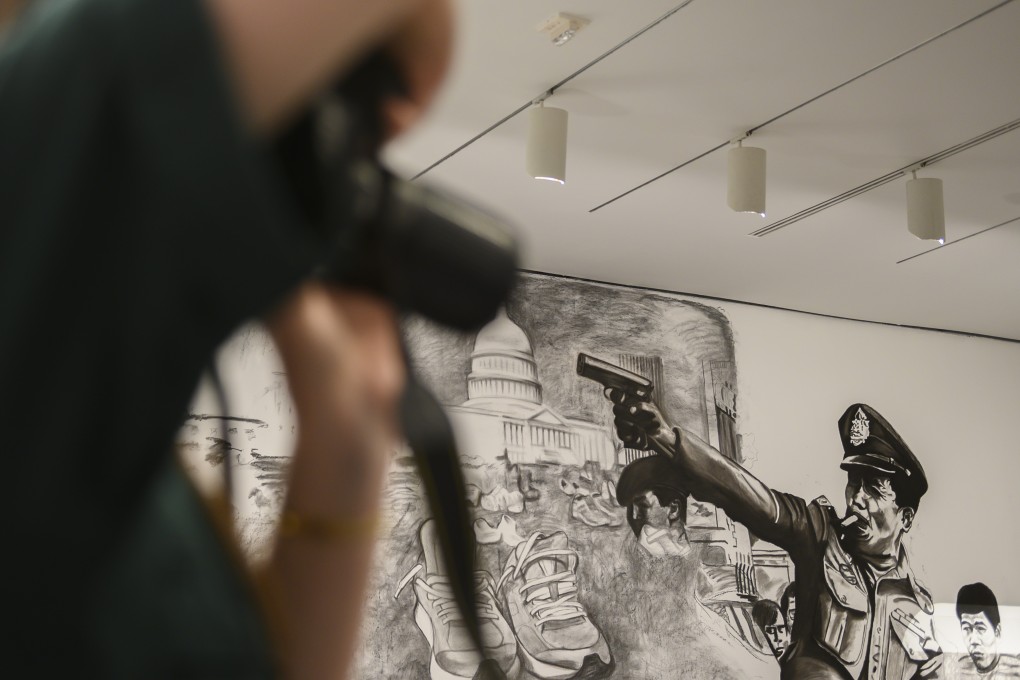How a bowl of Thai curry can be an artwork, a conversation starter and a protest
- Thai artist Rirkrit Tiravanija’s exhibition, ‘(who’s afraid of red, yellow, and green)’, combines art, food and a sense of rebellion
- Visitors are given a free bowl of curry which they eat in a room full of scenes from political protests and demonstrations

Twenty-seven years ago, Thai artist Rirkrit Tiravanija began serving curry out of a makeshift kitchen in a New York gallery. The artwork was not only the curry and its environs, but also the people who came to the gallery, the way they interacted with one other, and the conversations they had while they ate.
It fell within the framework of what’s known as “relational art”, or “social practice”, working off the kind of amorphous concept that can drive people crazy: basically, the way people experience Rirkrit’s art is the art.
In the years between that work, Untitled (Free/Still), and Rirkrit’s current exhibition at the Hirshhorn Museum and Sculpture Garden in Washington, “(who’s afraid of red, yellow, and green)”, the art and food worlds have inched closer to each other.
Restaurant openings have risen to the same cultural status as art openings. Some pop-up dining experiences toy with the same social dynamics of interactivity and discomfort that Rirkrit explored.

At the same time, Rirkrit – who is adamant that he is not a chef – has released a cookbook, and has another in the works. He has also opened a seasonal restaurant and art gallery called Unclebrother in the Catskill Mountains in New York state.